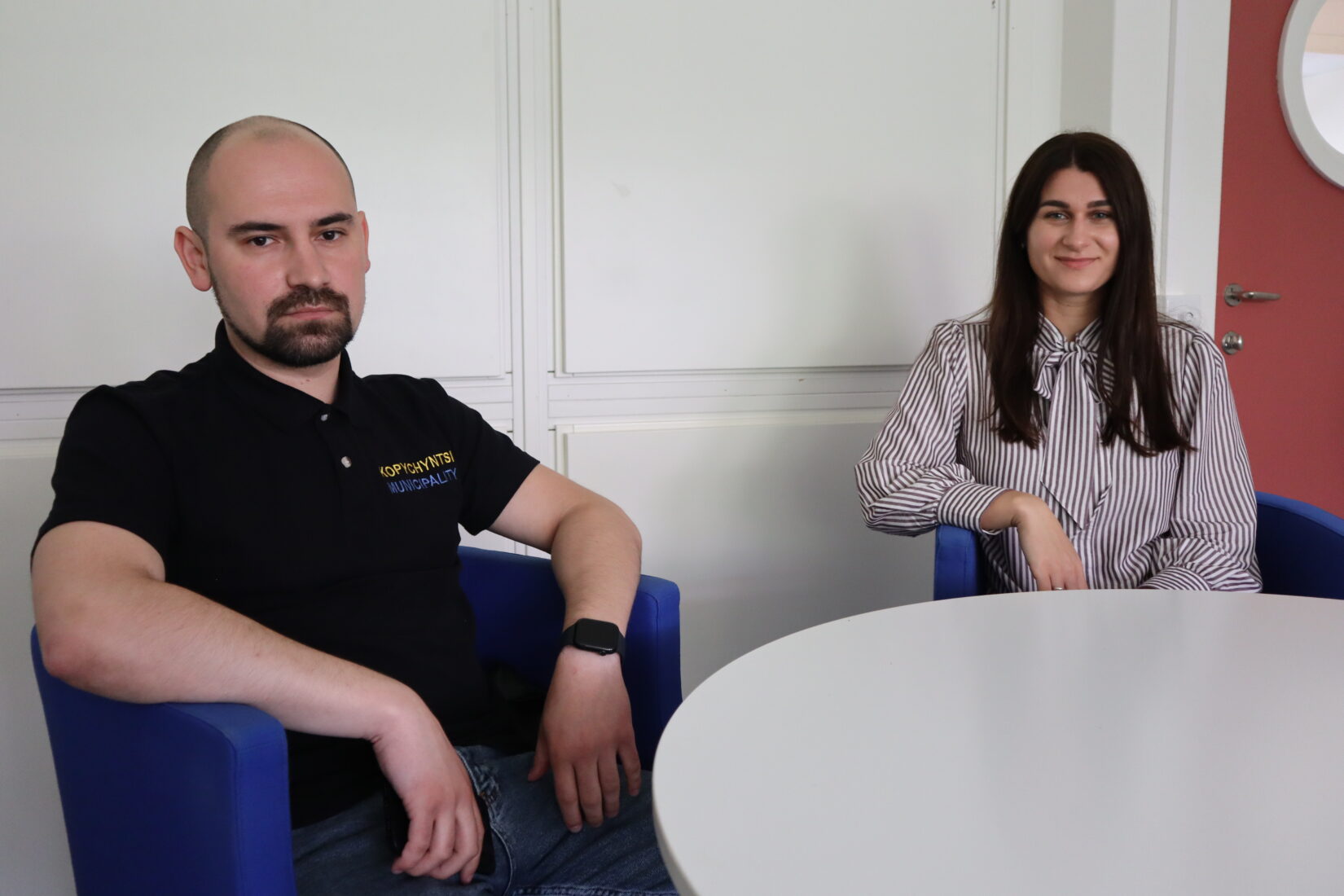Hello Vitalii Barabash, Deputy Mayor of Kopychyntsi, Ukraine, and Mariya Tuzyk, NGO representative and project leader! As part of the project, eight of you went on a study visit to Höör Municipality in June. How was it?
– It was an intense and educational week. The idea behind the exchange was for us to learn more about how to create an inclusive society, and we really got to do that, including meeting representatives from the children’s and education sector, local business owners, and entrepreneurs. We also met with the municipality’s outdoor coordinator and made a study visit to Maglehills’ special housing, including a tour of the municipality’s storage of assistive devices . This visit will help us create a plan and direction for how to work moving forward, says Vitalii Barabash.
– We are learning about accessibility—physical, digital, and psychological—to make our society more inclusive. Even though the situation is difficult right now and our budget is limited, we are trying to find ways to continue to develop, says Mariya Tuzyk.
In what ways is accessibility work important to you?
– We are a small municipality with about 13,500 residents. Most public buildings and institutions date back to the Soviet era. Back then, there was no concept of accessibility or opportunities for disabled people to access public services and facilities. Since the fall of the Soviet Union, many of these buildings and much of the infrastructure remain, says Vitalii Barabash. At the same time, we have tried to make the municipality more accessible, for example, by offering ramps for people in wheelchairs.
Russia’s full-scale invasion brings new challenges in this area, doesn’t it?
– Yes, we realised that many veterans returning from the war have different types of trauma and disabilities. Right now, a large portion of our financial resources are going to the war. But we are focusing on finding projects like this one to gain support and knowledge for an action plan that can be implemented when the war is over, says Vitalii Barabash.
What were your most important learning from the Höör visit?
– The most important learnings from the visit to Höör centered around their advanced approaches to inclusivity and accessibility in municipal services. Höör’s implementation of the national law on digital accessibility, which mandates public websites and mobile apps to meet WCAG 2.1 AA standards, stood out as a significant achievement. This ensures that digital platforms are accessible to people with disabilities, incorporating features like alternative text for images and structured code for screen readers. Their adaptable municipal website, designed for people learning Swedish or those with comprehension impairments, reflects a strong commitment to inclusivity. In terms of physical accessibility, the presence of Braille on information signs and the provision of sign language interpretation for online meetings highlight Höör’s dedication to making all aspects of municipal life accessible to everyone. The design of inclusive playgrounds, catering to children with disabilities, promotes both safety and social integration, further emphasizing the municipality’s focus on inclusivity. The visit also provided valuable insights into Höör’s approach to inclusive education, where children with special educational needs are fully integrated into the learning process through individualized learning plans and close collaboration between teachers and specialists. Finally, the importance of community support and engagement in shaping inclusive policies was evident, as public consultations and forums allow citizens with disabilities to voice their needs and influence decision-making. These experiences underscored the value of a comprehensive and coordinated approach to creating an inclusive environment, emphasizing continuous learning, adaptation, and active community involvement, says Mariya Tuzyk
Will you be able to implement some of the things in Ukraine?
– Yes, there are several practices from Höör that could be implemented in Ukraine, particularly in the realm of digital accessibility and inclusive education. One concrete example is the adoption of digital accessibility standards similar to those in Höör, where public websites and mobile apps comply with WCAG 2.1 AA standards. Implementing such standards in Ukraine could significantly improve access to information for people with disabilities, ensuring that government services and municipal information are more inclusive.
Additionally, the concept of inclusive playgrounds, which cater to the needs of children with disabilities, could be introduced in Ukrainian communities. This would not only enhance safety but also promote social integration from a young age. By focusing on these specific, actionable examples, our municipality could begin to make significant strides toward greater inclusivity, drawing inspiration from Höör’s well-established practices. In fact, we have already applied for funding to build a playground that is fully accessible for all in our municipality, reflecting our commitment to implementing these ideas locally, says Mariya Tuzyk.
What is the next step of the project?
– The next step of the project involves a second trip to Sweden in November, where another group of city staff, civil servants, and members of the council will participate. This visit will focus on learning more about how to make our municipality more inclusive and accessible, building on the knowledge and insights gained from previous exchanges. The goal is to deepen our understanding and explore practical ways to implement these inclusive practices in our own communities, says Mariya Tuzyk.
Facts
The ICE project is funded through the SI Baltic Sea Neighbourhood Programme. The projects funded by the programme aim to create conditions for mutual and long-term cooperation between actors in Sweden and other EU countries in the Baltic Sea region, as well as five countries in the EU’s Eastern Partnership.
The ICE project will continue until May 31, 2025, and according to the plan, representatives from Höör Municipality are also scheduled to visit Kopychyntsi in 2025, if possible, considering the war. Otherwise, a meeting in Poland, halfway between the countries, may be considered.
The ICE project was granted funding under the special call for Ukrainian targets group arranged within the SI Baltic Sea Neighbourhood Programme in summer 2023. The programme now has an ongoing call for seed funding, closing on September 17.
